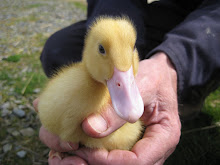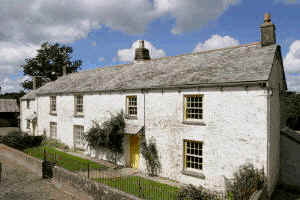 Linda Grant, a writer who has me entirely in her thrall,
mentions smallholders in passing in her book The Thoughtful Dresser:
Linda Grant, a writer who has me entirely in her thrall,
mentions smallholders in passing in her book The Thoughtful Dresser:“It would be something if I could learn to live with sensible shoes. Lady traffic warden lace-ups, Doc Martens, T-bar children’s sandals in primary-colour leather, clogs. But to wear those shoes is to stand to one side from life (or life as I want to lead it), which doesn’t involve a smallholding in Wales, with obligatory rain over the low hills, and clucking, shitting chickens). I want beautiful fashionable shoes which I can nonetheless walk in...”
This made me laugh, of course, as I considered the shoes I
own. Shoes that you can walk in are a
pre-requisite for life on the smallholding and the farm, but long gone are the
days of wooden pattens, which must have been just as uncomfortable in medieval
times as the elegant pointed toes and stiletto heels that Grant craves
now. What made me chuckle though, was
not just the neatly categorised and passed over life of the smallholder, but my
realisation that shoes for the farm, unlikely as that may seem to many, also have a
hierarchy of beauty.
Let me start with wellies, which,
bizarrely, held a place in fashion not so long ago and always looked entirely
weird and ridiculous on London streets on anyone other than toddlers being
taken out in the rain. I am as picky about my wellies as Grant delightfully is
about clothes, shoes and handbags. Spend
a tenner on those pale green farm wellies with toffee coloured soles available
in all agricultural merchants? No
chance. That would be the equivalent of traffic warden style. I want wellies that come to an inch below my
knee, no lower, with a gusset and a buckle so I can fix them over winter or
summer thicknesses of jeans or thermal cyclist’s leggings or bare legs. I want them to have fabulous fit around the
ankle so my feet don’t slop about in them and are secure for walking many
miles. I want thick, heavily cleated
soles that stop me sliding on the slippery Devon clay, and I want them neoprene
lined, thank you very much, preferably in pillar box red to cheer me up as I
slide my feet inside. The rubber outer should
be dark brown or deep green or possibly black, although I‘ve yet to find a good
black wellington boot. I should not feel as if I have slippers on and be able
to detect every lump or stone I walk on, so they should be well heeled as well
as soled. All this, and utterly
workmanlike too – I expect them to last me at least a couple of years with
daily, aggressive wearing. Wellies like
this are not cheap. They are probably my most important tool, so why should
they be? And to my biased eye, they are aesthetically pleasing. But unlike gorgeous suede wedges, they should
not be box fresh; a lack of soil or wear declaims the naivety and charming
ignorance of the newbie.
When it’s not raining there’s walking
boots for on the farm or in any weather for 10km jaunts on Dartmoor. They are clunky, chunky, comfy. They tell a story about intent and journeys
past. They are leather, reliable, also
non-slip (a recurring theme with much of my footwear) and have interesting
laces. The laces are long and in some
unknowable way, technical. They never
seem to get wet, they rarely come undone, they give a bit of visual light
relief to the tan boots; they are ineffably fit for purpose. Would I choose pink walking boots, or sky blue
or anything other than natural leather?
Of course not. I have standards
too.
It’s really hard to wear slinky
shoes or high heeled anything on the farm (although I’ll come to that in a
minute). But I don’t wear wellies or
walking boots all the time. I have
several pairs of what I call everyday boots.
Some are ankle boots, usually lace-ups, preferably lambskin lined,
although I do have a pair of zipped boots that I love because the leather is
intriguingly aged. These are what I wear
to go shopping – to buy livestock feed, do the monthly food shop, go to market
and so on. If I find a lamb out on the
road, these are sturdy enough to cope with puddles, slush and mud, so don’t
hamper any rescue efforts, but tidy enough to be seen out in public without me
looking like some rural hermit who doesn’t get out much. I also have leather
wellies that I use to visit other people’s farms or agricultural shows so I
don’t risk transferring disease to or fro on my everyday wellies. I could wear these in London quite happily,
although I haven’t, yet. I do love
boots, always have. I have knee high
ones that work with dresses or jeans. I
even have suede pointy-toed kitten heeled ones, but I can’t wear them going
from the house to the car across the farmyard, so because I am lazy and can’t
be bothered to change boots once I’m in the car, I don’t wear them as often as
I’d like. Talking of boots, I’d not be
in Linda Grant’s good books – I have several pairs of sheepskin boots, knee
high and ankle height, for wearing indoors from autumn to spring. My office is cold, the heating is reliant on
my remembering to throw more logs on, so warm boots are as essential as bootees
on a baby. I know summer is here when my
feet get too hot for sheepskin.
I do have some high heeled shoes
and boots. I used to wear them in the
house when we had friends over for supper.
But the scullery (yes, there are aspirational benefits in having a house
outside of a city) is cobbled directly on earth and I’d get my heels stuck
between the stones and leave deep pits in the floor.
There is one pair of shoes on the
shelves in the boot room that warrant the full disdain of Ms Grant; my practical,
ever useful, but rather ghastly embarrassment, the Birkenstock plastic clog. I can quickly slip them on to go outside to
collect the post, ferret deeply in a freezer, check on a farrowing pig or stop
the dogs bothering a delivery man. But
no, even though they are covered in colourful flowers (perhaps because they are
covered in colourful flowers), they do not please my eye, do not offer joy,
they just play a functional role that suits a life that includes clucking,
shitting chickens, mooing, shitting cows
and bleating, shitting sheep.
















